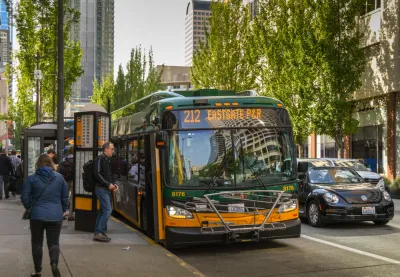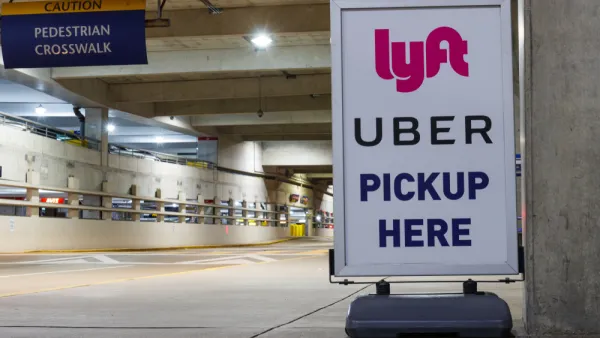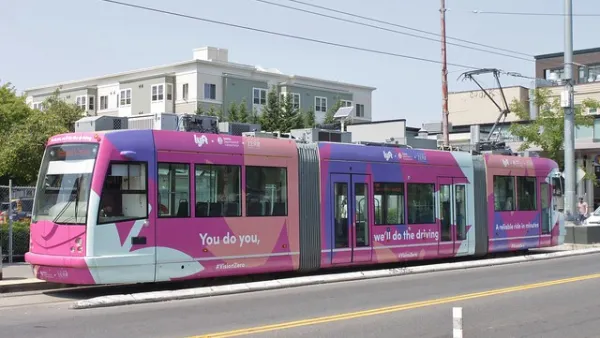Ridehailing companies saw a steep drop in ridership in the city during the pandemic, followed by a slow recovery as their prices increase and demand slows.

Ridehailing companies in Seattle are seeing a slower recovery than in other cities, reports Doug Trumm for The Urbanist. While other parts of the country saw ridehailing grow as an alternative to public transit during the pandemic, Seattle ridership continues to lag compared to pre-pandemic ride volumes. While Seattle ridership for Uber and Lyft hovers at 39 percent compared to 2019, “The companies claim to be at about 70% of normal ridership in most other metropolitan regions.” By contrast, public transit ridership is recovering more quickly. “In April, [King County] Metro ridership clocked in at 49% of its 2019 level.”
Experts attribute the lackluster performance of ridehailing companies to reduced demand and wages that are still too low in a labor market where workers wield more power. “Uber and Lyft have jacked up prices significantly, but most of that is not being passed along to drivers. Instead, the companies are keeping more for themselves in an increasingly desperate attempt to finally turn a profit after a decade of loss-leading growth with little abandon.”
Trumm points to previous arguments made in The Urbanist that “the ridehailing business model appears flawed on a fundamental level for a number of reasons,” including the high cost of car ownership and the failure of the business model to turn a profit as it scaled up. Now, with remote work available to a large percentage of Seattle-area workers, the demand for high-priced ridehailing is even lower.
The article expresses optimism that the slow revitalization of the ridehailing industry may shift more travelers to public transit, but that depends on the ability of public transit to effectively serve Seattleites. “Things like faster and more reliable transit come to mind,” writes Trumm, but notes that transit improvements in the region took a hit from the pandemic as well.
FULL STORY: Ridehailing Sees Bigger Ridership Dip than Transit in Seattle

Analysis: Cybertruck Fatality Rate Far Exceeds That of Ford Pinto
The Tesla Cybertruck was recalled seven times last year.

National Parks Layoffs Will Cause Communities to Lose Billions
Thousands of essential park workers were laid off this week, just before the busy spring break season.

Retro-silient?: America’s First “Eco-burb,” The Woodlands Turns 50
A master-planned community north of Houston offers lessons on green infrastructure and resilient design, but falls short of its founder’s lofty affordability and walkability goals.

Test News Post 1
This is a summary

Analysis: Cybertruck Fatality Rate Far Exceeds That of Ford Pinto
The Tesla Cybertruck was recalled seven times last year.

Test News Headline 46
Test for the image on the front page.
Urban Design for Planners 1: Software Tools
This six-course series explores essential urban design concepts using open source software and equips planners with the tools they need to participate fully in the urban design process.
Planning for Universal Design
Learn the tools for implementing Universal Design in planning regulations.
EMC Planning Group, Inc.
Planetizen
Planetizen
Mpact (formerly Rail~Volution)
Great Falls Development Authority, Inc.
HUDs Office of Policy Development and Research
NYU Wagner Graduate School of Public Service




























